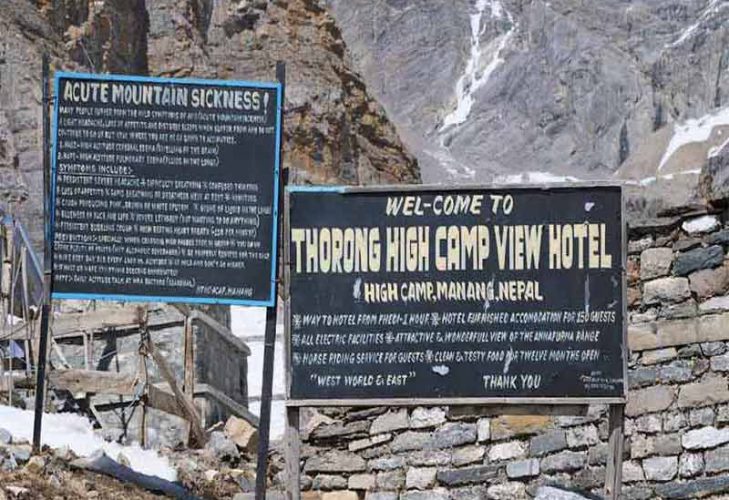Annapurna Circuit trek detail itinerary

Annapurna Circuit trek detail itinerary
The Annapurna Circuit Trek is a popular trekking route in the Annapurna region of Nepal. It typically takes around 16 to 17 days to complete, depending on your pace and itinerary.
Day 1: Arrival In Kathmandu (1300 Meters).
Upon arrival in Kathmandu, you will be greeted at the airport and transferred to your hotel. You can spend the rest of the day exploring the vibrant capital city and preparing for the trek.
Day 2: Kathmandu to Chame (2,715 Meters)
Early Morning takes a Microbus to Besishar and a Local Jeep to Chame about a 13-hour drive to Chame. Stay overnight at Lodge
Day 3: Chame to Pisang (3,300 Meters)
Trek from Chame to Pisang (5-6 hours) Explore Upper Pisang and enjoy panoramic mountain views. Stay overnight at Lodge
Day 4: Pisang to Manang (3,540 Meters)
Trek from Pisang to Manang (4 hours) Cross the Marsyangdi River and walk through beautiful landscapes. Stay overnight at Lodge.
Day 5: Acclimatization Day in Manang
Rest day in Manang for acclimatization Optional side trip to Gangapurna Lake and Manang village exploration. Stay overnight at Lodge
Day 6: Manang to Yak Kharka (4,020 Meters)
Trek from Manang to Yak Kharka (3-4 hours) Ascend gradually and enjoy the alpine scenery. Stay overnight at Lodge
Day 7: Yak Kharka to Thorong Phedi (4,450 Meters)
Trek from Yak Kharka to Thorong Phedi (3-4 hours) Cross the Thorong La Pass base camp. Stay overnight at Lodge.
Day 8: Thorong Phedi to Muktinath (3,800m) via Thorong La Pass (5,416 Meters)
Start early morning for a challenging trek to Thorong La Pass and Descend to Muktinath, a famous pilgrimage site. Stay overnight at Lodge
Day 9: Muktinath to Marpha (2,670 Meters)
Trek from Muktinath to Marpha (6 hours) Explore the village of Marpha, known for its apple orchards and apple products.
Day 10: Marpha to Tatopani (1,190 Meters)
Trek from Marpha to Tatopani by bus 3-4 hours drive and enjoy a relaxing hot spring bath in Tatopani. Stay overnight at Lodge.
Day 11: Tatopani to Ghorepani (2,900 Meters)
Trek from Tatopani to Ghorepani (6-7 hours) Pass through villages like Sikha and Chitre. Stay overnight at Lodge.
Day 12: Ghorepani to Poon Hill (3,210 Meters) and Tadapani (2,630 Meters)
Early morning hike to Poon Hill for sunrise views over the Annapurna and Dhaulagiri ranges Trek to Tadapani (5- hours). Stay overnight at Lodge.
Day 13: Tadapani to Ghandruk (1,940 Meters)
Trek from Tadapani to Ghandruk (3-4 hours) Explore the traditional Gurung village of Ghandruk. Stay overnight at Lodge.
Day 14: Ghandruk to Nayapul (1,070m), drive to Pokhara
Trek from Ghandruk to Nayapul (4-5 hours) Drive from Nayapul to Pokhara (1-2 hours). Stay overnight at Hotel.
Day 15: Pokhara to Kathmandu.
From Pokhara Tourist bus to Kathmandu (200 KM) 7-8 hours drive. Stay overnight at Hotel.
Day 16: Kathmandu
Your free day in Kathmandu hotel includes breakfast service.
Day 17: Departure From Kathmandu
Your Annapurna Circuit trek comes to an end. You’ll be transferred to the airport for your departure flight. Say goodbye to Nepal with unforgettable memories of the Rolwaling region and the Himalayas.
Your Annapurna Circuit trek comes to an end. You’ll be transferred to the airport for your departure flight. Say goodbye to Nepal with unforgettable memories of the Everest region and the Himalayas.
Please note that this itinerary is a general guideline and can be customized based on your preferences and the recommendations of your trekking agency or Trekking guide requires technical climbing skills and should be undertaken with an experienced guide. It’s essential to acclimatize properly, follow the advice of your guide, and be prepared for unexpected weather conditions or other factors that may affect the Annapurna Circuit trek.
The best time to do the Annapurna Circuit trek is during the spring (March to May) and autumn (September to November) seasons. These months offer the most favorable weather and optimal high Mountain trek conditions in the Annapurna region. Spring (March to May): This is the post-winter season when the weather starts to warm up, and the trekking trails become vibrant with blooming flowers and rhododendrons. The temperature is generally mild, with clear skies and excellent visibility. It’s a great time to witness the beautiful landscapes, lush greenery, and panoramic mountain views.
Autumn (September to November): This is the post-monsoon season when the weather is stable, and the skies are generally clear. The temperature is comfortable, making it ideal for trekking. The autumn months offer breathtaking views of the mountains, and the overall trekking experience is enhanced by the festive atmosphere during the Nepalese Dashain and Tihar festivals.
Annapurna trek in Nepal, the choice ultimately depends on your preferences. If you enjoy seeing colorful flowers and blooming vegetation, spring is a good choice. If you prefer clearer skies and panoramic mountain views, autumn is a great option. It’s worth noting that the Annapurna region can be visited year-round, but other seasons such as winter (December to February) and monsoon (June to August) may bring more challenges due to cold temperatures, snowfall, and potential landslides.
